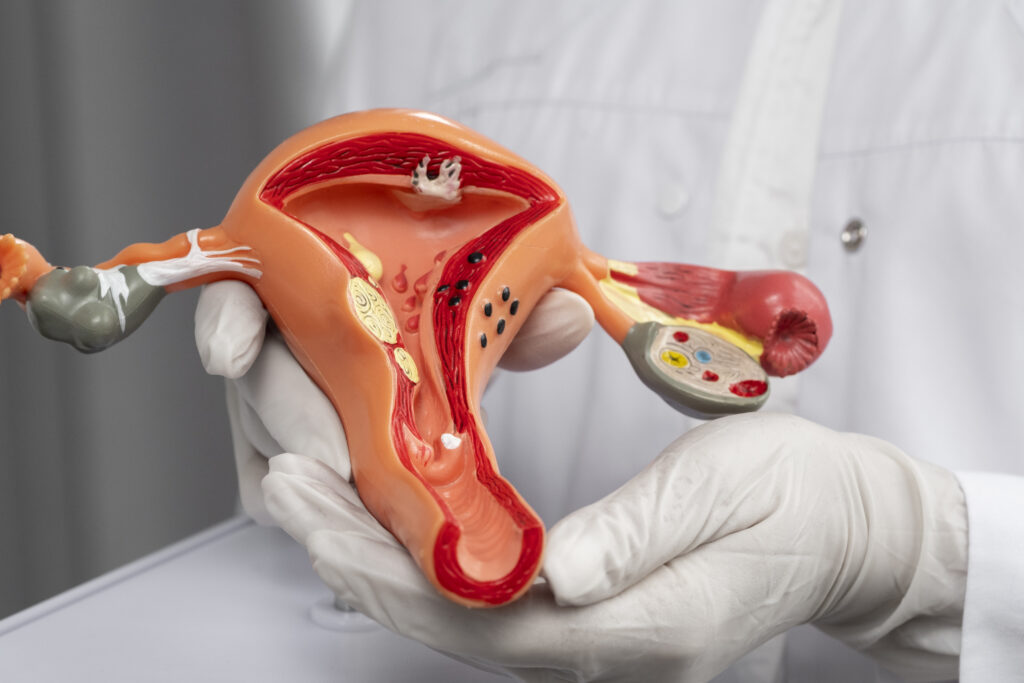In this post, we dive into Ovarian Cancer—what it is, how it’s diagnosed, and why early detection matters. We’ll explore treatment options and hope, especially under the care of Dr. Nitin Singhal at Dr Nitin Singhal Cancer Centre.
Writing about Ovarian Cancer can feel heavy, sure. But let's break this down slowly and genuinely—with no fluff or jargon. Pretty soon, you’ll understand why talking about this matters, and how Dr Nitin Singhal Cancer Centre is making a real difference.

I want to introduce Ovarian Cancer. It’s a term we hear, but do we really know what it means? To put it simply, ovarian cancer arises when abnormal cells in the ovaries multiply uncontrollably. These cells can form tumors that spread to nearby tissues—and, sadly, that makes it dangerous.
Let’s unpack the essentials:
Not every lump or pain means cancer. But learning the signs early is key—let’s look closer at that.
Knowing your risk factors doesn’t mean you’re doomed. It simply helps with awareness.
Still, keep in mind: having risk factors doesn’t guarantee anything; many women with ovarian cancer have no obvious risk markers.
Sounds confusing? Don’t worry, we’ll explain. Ovarian cancer’s tricky because symptoms can appear mild or vague:
If these symptoms persist for more than a few weeks, it’s wise to see a doctor. Trust your gut—literally.
Here’s what you need to know: diagnosing ovarian cancer often starts with routine check-ups. But it may also be picked up using:
Getting these tests done early improves outcomes dramatically. That’s why awareness is so important—know the signs, insist on tests if something seems off.
Treatment of ovarian cancer is evolving. At the Dr Nitin Singhal Cancer Centre, the focus is on evidence-based care combined with compassion and innovation.
The most common first step is Ovarian Cancer surgery—called debulking. The goal is to remove the tumor and as much cancerous tissue as possible. Sounds scary? It can be, but when done early, surgery greatly increases chances of success.
Used to kill remaining Ovarian cancer cells. It’s often done with platinum-based drugs (like carboplatin), sometimes along with paclitaxel. Modern chemo is more tolerable now, with fewer side effects than in past decades.
Here’s where it gets exciting: targeted therapies, like PARP inhibitors, target specific cancer cell vulnerabilities. They attack Ovarian cancer while sparing healthy tissue—fewer headaches (literally and figuratively).
Though less common—radiation can be used to destroy remaining cancer cells in specific areas if needed.
Dr Nitin Singhal’s team actively participates in cutting-edge clinical trials. Immunotherapy (teaching your immune system to fight Ovarian cancer) is a growing field with promising results.
Treatment is demanding—physically and emotionally. At Dr Nitin Singhal Cancer Centre, patients with Ovarian Cancer receive a whole-person approach:
Survivorship isn’t just a buzzword—it’s a commitment. Recovery doesn’t always mean “cured”—it means living well, and fully.
The research landscape for Ovarian Cancer shows ongoing progress, especially in early detection tools and immunotherapy developments.:
At-risk individuals can be tested for BRCA mutations. If positive, options include enhanced screening or preventive surgery (oophorectomy), which significantly reduces risk.
Scientists are working on better blood tests and imaging methods to catch ovarian cancer sooner—before symptoms appear. These are still under development but show promise.
Some experiments are exploring vaccines that target tumor proteins unique to ovarian cancer. It’s early-stage, but hopeful.
Genomic and molecular mapping helps doctors tailor treatment to each woman’s specific cancer—personalized medicine in action.
Sometimes we need a reminder: patients are people—with families, careers, dreams. Dr Nitin Singhal’s clinic shares many success and survival stories, from women in their 30s to those over 70. Hearing someone say, “I’m back at work,” or “Happy birthday with full health,” brings hope to others.
One patient, let’s call her Meera, was diagnosed in her early forties. Surgery and chemo were tough, but at Dr Nitin Singhal Cancer Centre she found strength, community, and eventually remission. Now she runs marathons, something she never pictured doing again. That’s what hope looks like.
While no method guarantees 100% prevention, these steps can reduce risk:
Simple steps—but they add up. Early detection and prevention are best handled with consistency.
When you speak with Dr Nitin Singhal, you get professional expertise and warmth. You get a partner committed to every step of your journey.
If Ovarian Cancer or risk concerns touch your life—consider seeing a specialist such as Dr Nitin Singhal Cancer Centre. You’re not alone, and Ovarian Cancer treatment outcomes are improving every day with awareness and research.
There’s no perfect screening for average-risk women, but transvaginal ultrasound and CA‑125 blood tests, combined with symptom tracking, Ovarian Cancer improve chances of early detection.
While nothing is guaranteed, long-term birth control pills, pregnancy, breastfeeding, a healthy lifestyle, and genetic counseling for those with family history can lower risk.
Treatment usually includes Ovarian Cancer surgery, chemotherapy, and sometimes targeted therapies like PARP inhibitors. Radiation or immunotherapy may also be used depending on your case.
Tests for BRCA1 and BRCA2 can reveal increased risk. Positive results may lead to enhanced screening or preventive surgery—making early detection or prevention possible.
Survival depends on stage at diagnosis. Early-stage (I or II) has higher survival rates (70–90%), whereas later stages (III/IV) range from 30–50%. Early detection improves outcomes significantly.
Thank you for reading this (admittedly long!) guide to Ovarian Cancer. If any part of this hits close to home—or simply sparks curiosity—reach out. Knowledge is power, and sharing hope is how we fight back.
